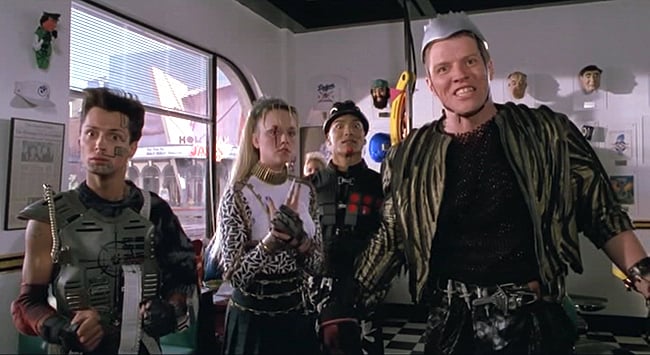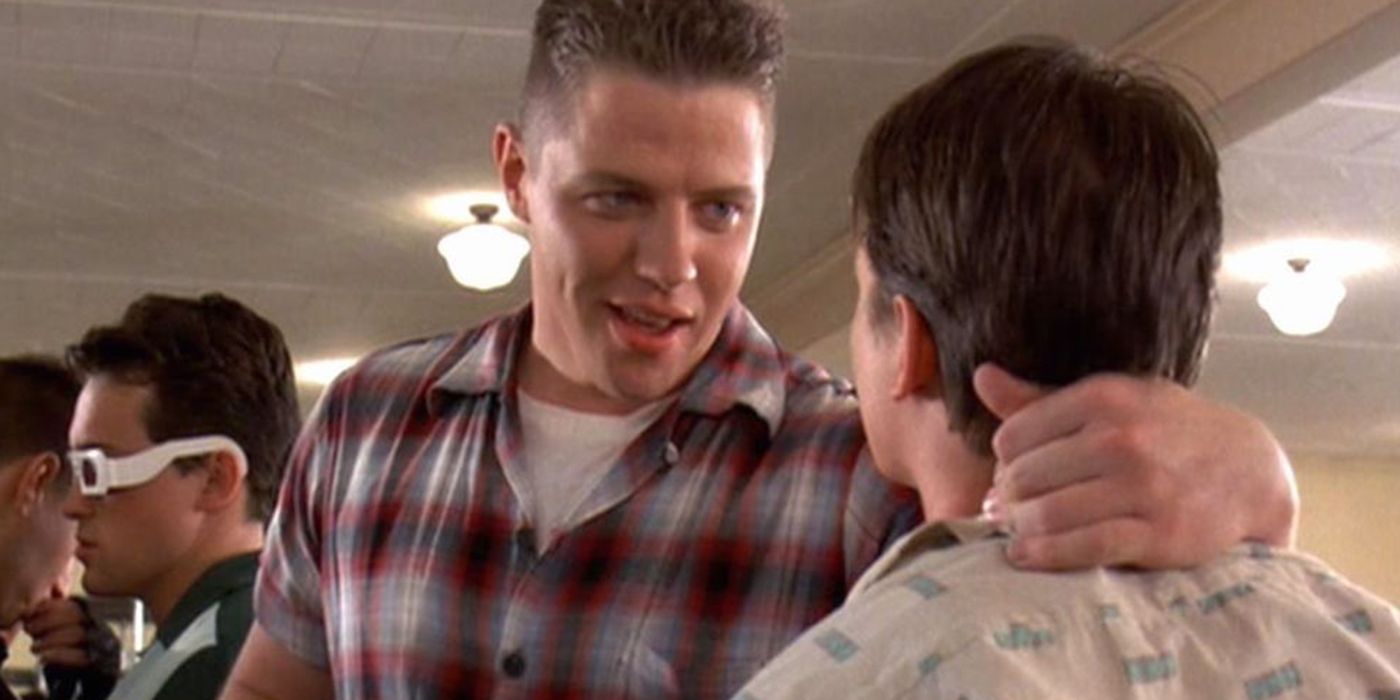
Wilson who brought the imbecilic bully to life. Adding to the character of Biff was character actor Thomas F.
#Biff in back to the future movie#
The initial inspiration for the character came from a film producer, Ned Tannen, who had been incredibly antagonistic towards Robert Zemeckis and Bob Gale while filming the movie I Want To Hold Your Hand. Even his future self from 2015 can’t help but tell his younger self what a moron after hearing him say “make like a tree and get out.” He’s an idiot and a bully, but you can’t help but laugh at him, appropriately the very thing a bully hates. However, between his lack of intelligence that manifests in needing the smartest kid in class to do his homework for him, and his knack for mangling common terms of speech, he’s softened up just enough that he doesn’t come across as a bully from a bad after-school special. With a laundry list of character defects like that it would be difficult to like a villain like that.

Physically imposing, not particularly bright, inexplicably entitled, inherently violent, abusive toward women, absent any detectable self-awareness or human empathy, and capable of incredible misdeeds when left unchecked.” He was the bully incarnate at any age…It is notable that the archetypal 1980s bully actually attended high school in the 1950.Indeed, Biff Tannen embodies so much of what it meant to be a bully in the decades before social media.

Wilson…Truth is, though, whether slathered in makeup as middle-aged Biff in the mid-80s, towering over his schoolmates at young Biff in the mid-50s, or jacking his ska pants up to his nipples as old Biff in the version of 2015 where they had flying cars, Wilson channeled a figure that persists in each of our psyches. Back to the Future’s arch-antagonist, Hill Valley’s ever-present and ever-pugnacious pun-mangler, Marty McFly’s foil in time travel, and a surprisingly worthy adversary considering his mental and emotional limitations, Biff was portrayed by Thomas F. “(W)hen it comes to genre-defining roles, nothing comes close to Biff Tannen. Tomar even references him in a litany of pop-cultural bullies, including Johnny from The Karate Kid, in an essay looking at how bullying has evolved with the advent of social media and the internet in “Cyberbullying: The Changing Face of the Schoolyard Bully” for. He has cemented a role in pop-culture as one of the most memorable adversaries, often becoming as much of a short hand reference for a bully in news articles, just as Darth Vader has become synonymous with evil. The primary adversary of Back to the Future, Biff Tannen falls into this camp. The same has been true with the likes of the late Ricardo Mantolban as Kahn in the original Star Trek, or Tom Hiddleston’s Loki in the Marvel Cinimatic Universe. It was clear that they were bad guys, but they were so delightful, so charming, and so charismatic in the roles that we couldn’t help but love their performances even though we knew they were bad. Take for example any villain played by the likes of legendary actors like Christopher Lee, Vincent Price and Peter Cushing. Then are the villains that we just simply love to hate.

Often times they may be a force of nature like the Shark in jaws, the Balrog in Lord of the Rings, or the T-Rex in Jurassic Park.

Others take on such a life of their own that they become the star of the film, as is the case for most versions of the Joker in Batman. Some of these, like Darth Vader just resonate with us on such a primal level that when they first show up on screen, as was the case when the original Star Wars film first debuted, that audience members booed when they saw him.


 0 kommentar(er)
0 kommentar(er)
